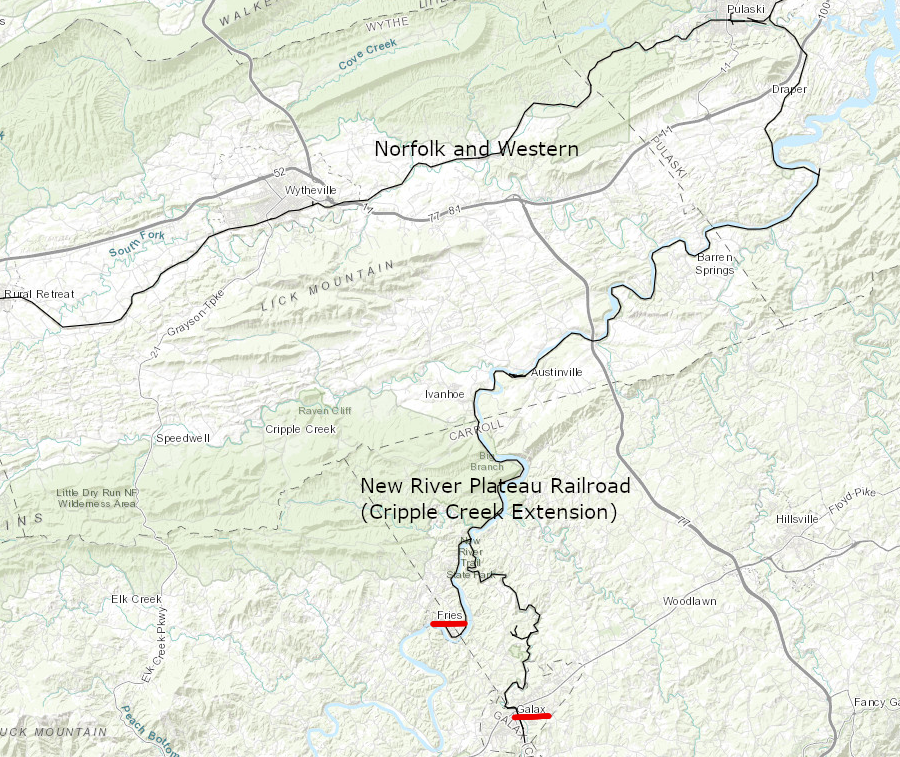
the Norfolk and Western Railway acquired the New River Plateau Railroad and built the Cripple Creek Extension to Fries and Galax
Source: ESRI, ArcGIS Online

the Norfolk and Western Railway acquired the New River Plateau Railroad and built the Cripple Creek Extension to Fries and Galax
Source: ESRI, ArcGIS Online
In 1882, the Norfolk and Western Railroad was busy expanding up the New River to the north to reach the coal fields in Virginia and West Virginia. It lacked the capacity to manage construction of another line through the Blue Ridge to reach the mineralized lands in Wythe and Carroll counties where there was iron, lead, and zinc ore. The Speedwell Furnace, on a tributary of the New River called Cripple Creek, was transporting iron by wagon to the Norfolk and Western line and sending it to customers in Baltimore, Wilmington, Cincinnati and St. Louis.
With the support of the Norfolk and Western Railroad, the New River Plateau Railroad Company raised the capital to build a connection south to the Speedwell Furnace.
Construction started at Martin's Tank, a small stop on the Norfolk and Western Railroad, and headed upstream along the New River. The track reached the charcoal-fueled iron furnace at Foster Falls in 1886. In 1887 the Pulaski Iron Company opened a major furnace at Martin's Tank using local ore, coal, and limestone, and the community was renamed Pulaski City.
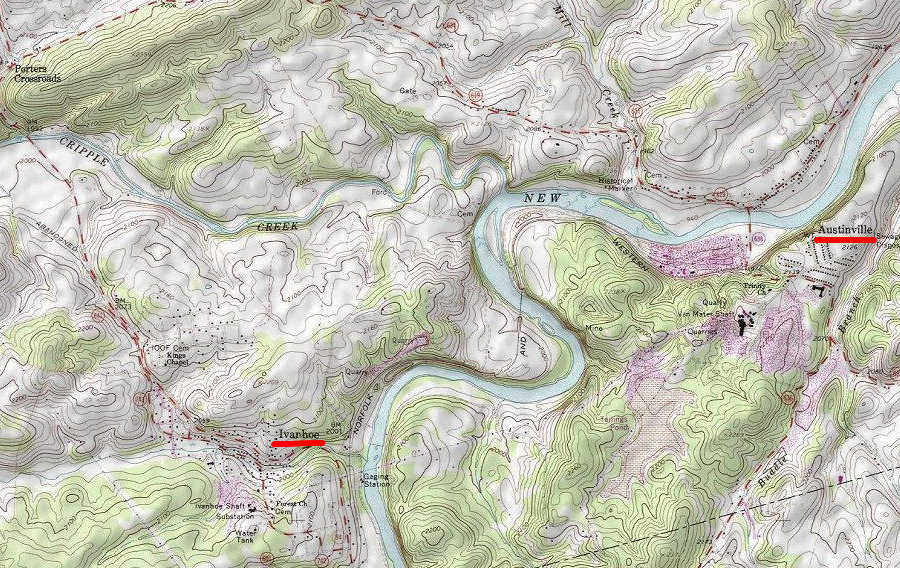
Cripple Creek flows into the New River between Austinville and Ivanhoe
Source: ESRI, ArcGIS Online
Building track to the lead/zinc mines at Austinville and the iron furnace at Ivanhoe inceased freight traffic. In 1889 the railroad proposed an expansion across the Blue Ridge to Mount Airy, North Carolina. The North Carolina Extension, across the Blue Ridge, was never built because the Norfolk and Western Railway took full control of the New River Plateau Railroad Company in 1889.
The Norfolk and Western Railway renamed the route the Cripple Creek Extension. Track was extended further along the New River, where the floodplain made construction relatively easy, to the textile mill at Fries in 1901.
In 1906, branch lines were in operation going up Cripple Creek to the Raven Cliff and Speedwell furnaces and up Chestnut Creek to Galax. Those extension were intended to capture local freight traffic, but were not part of a plan to build through the mountains into North Carolina.
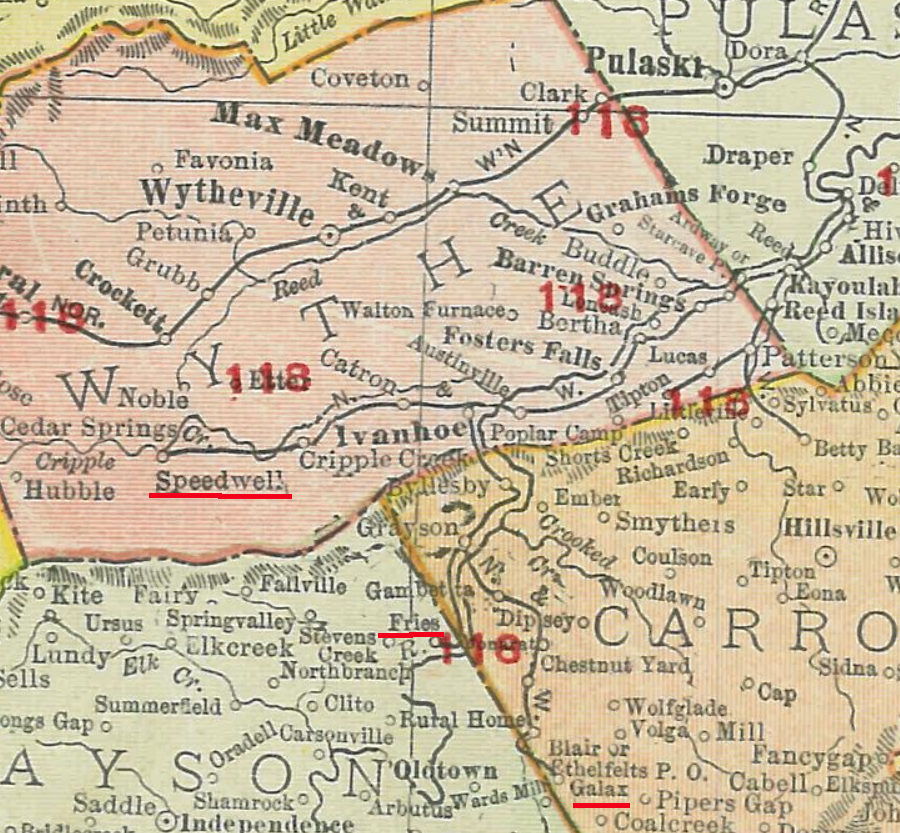
track was built to Fries in 1901, and to Speedwell and Galax by 1906
Source: National Archives, The Library Atlas of the World; Volume 1: United States (1913)
Instead, the Norfolk and Western Railway acquired the Roanoke & Southern Railway in 1896. The Roanoke & Southern Railway was a potential rival to the New River Plateau Railroad Company, because it had connected Roanoke to Winston Salem in 1891. The route of the Roanoke & Southern Railway provided a less-costly path into the North Carolina Piedmont.
Once the Norfolk and Western Railway had a connection to Winston Salem, there was no economic justification for building the North Carolina Extension through the mountains from Galax (or Fries) to Mount Airy. There was enough freight traffic to build south to Galax, but no additional mines worth the cost of further extension. Building a second track to Winston-Salem through the steep Blue Ridge would have been a waste of money.
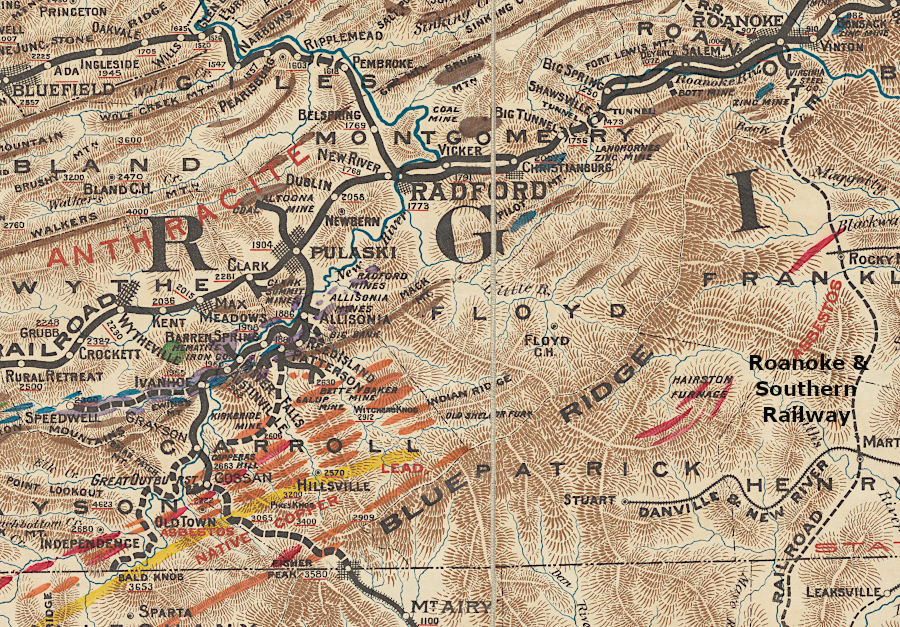
with acquisition of the Roanoke and Southern Railway in 1896, the Norfolk and Western Railroad had no reason to build the North Carolina Extension to Mount Airy
Source: New York Public Library, Mineral territory tributary to Norfolk and Western Railroad (1890)
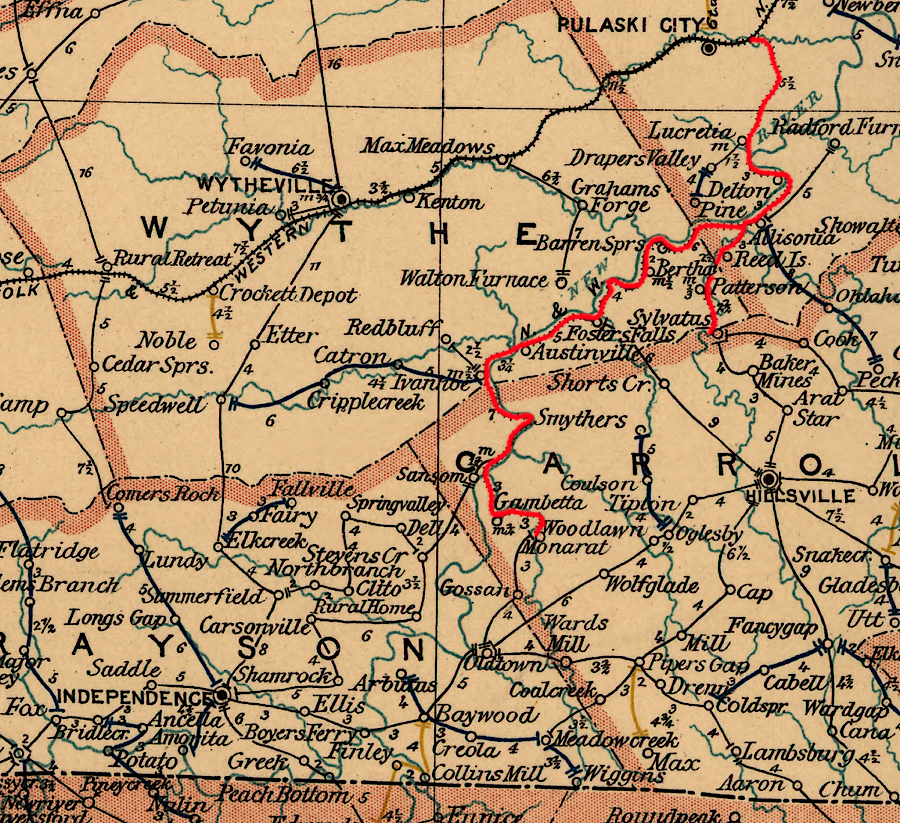
the Cripple Creek Extension in 1896, before construction to Speedwell
Source: Library of Congress, Post route map of the state of Virginia and West Virginia (1896)
Once the Norfolk and Western controlled both sets of railroad tracks extending south through the Blue Ridge in Southwest Virginia, any potential competition had been blocked. The Norfolk and Western Railway controlled access to most iron furnaces in Carroll and Wythe counties, as well as the lead/zinc mines at Austinville. Though the Virginia and Kentucky Railroad had been chartered in 1884 and authorized to link the iron ore lands in the Blue Ridge with the coal in Kentucky via the New River, the Virginia ore mines did not generate enough freight to support two railroads.
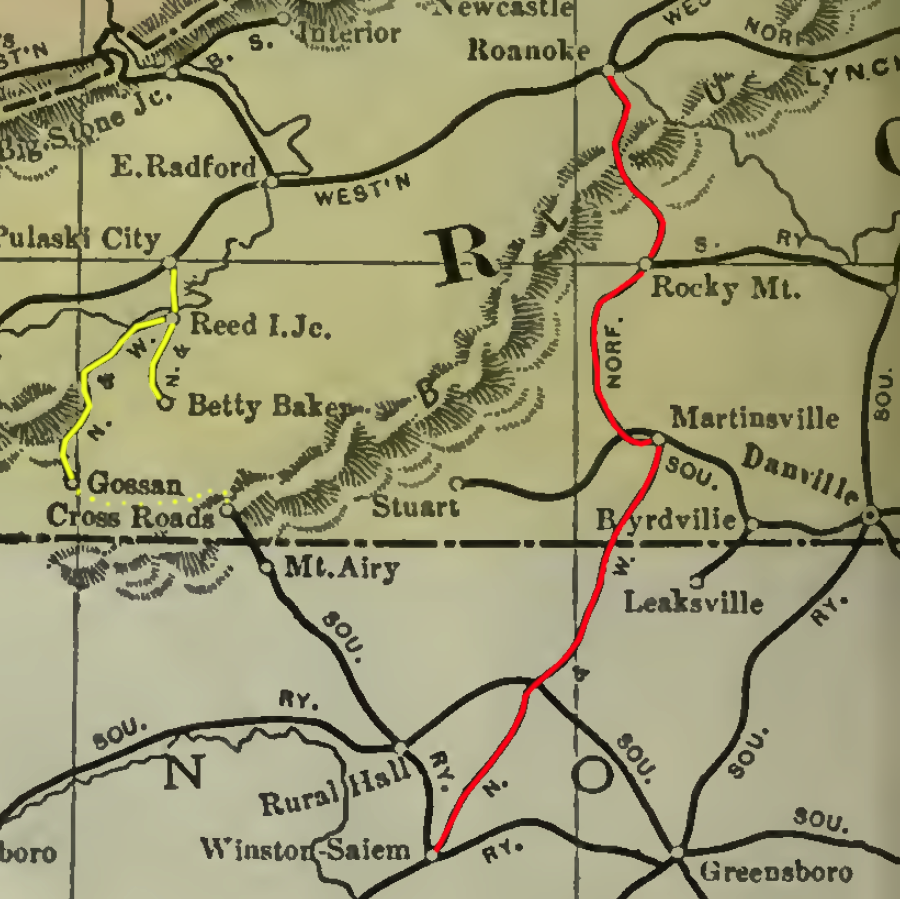
the North Carolina Extension (yellow dots) was not needed, once the Norfolk and Western Railroad acquired the Roanoke & Southern Railway or "Pumkin Vine" (red)
Source: Poors Manual of Railroads 1901, Railroad Map of the United States - Delaware, Maryland, Virginia and West Virginia (after p.128)
The last of the lead, zinc, and iron ore mines at Austinville closed in 1981. That cut the traffic on the 50-mile stretch of rail between Pulaski-Galax from 2,000 cars/year to 300 cars/year.
Due to the reduced business, the Norfolk and Western Railway abandoned the Cripple Creek Extension in 1985. The president of Webb Furniture in Galax complained that the closure would affect potential economic development in the area, but he admitted that his factory was shipping by truck and not using the railroad.
In 1986, the railroad donated the trackbed to the State of Virginia.1
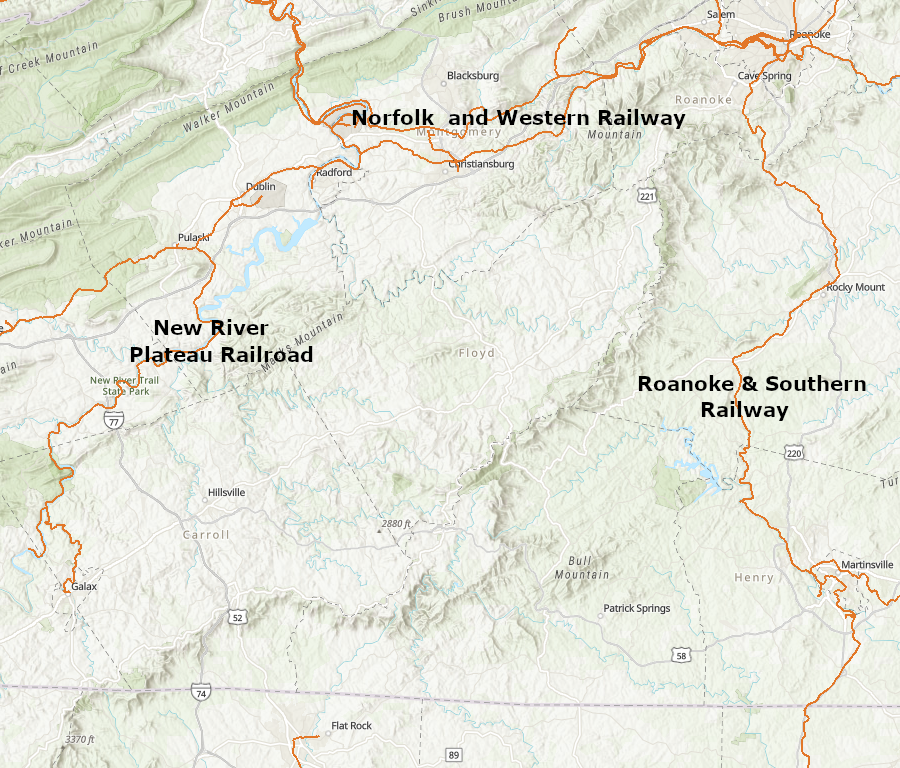
the Norfolk and Western Railway used the Roanoke & Southern Railway to reach the Carolina Piedmont, rather than build south from Galax
Source: ESRI, ArcGIS Online
Much of the New River Plateau Railroad/Cripple Creek Extension is now a popular state park, the New River Trail. It offers a 57-mile section of former roadbed for hiking, biking, and equestrian use. Recreational users can pass through the Gambetta Tunnel along Chestnut Creek near Galax, and the Austinville Tunnel on the New River between Austinville and Shot Tower State Park. The New River Plateau Railroad Company carved those two tunnels so trains could avoid curves and steep grades.2
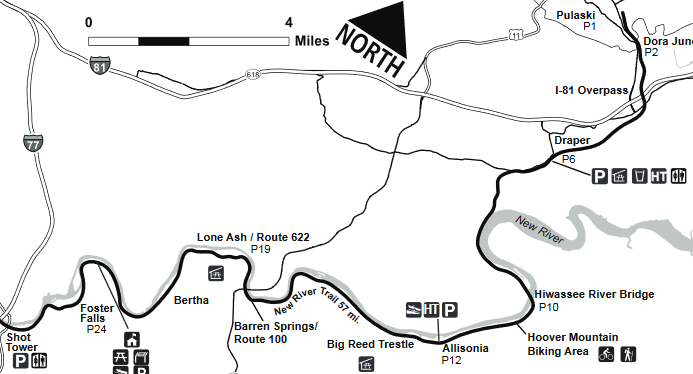
after a rails-to-trails conversion, the Cripple Creek Extension is now New River Trail State Park
Source: Virginia State Parks, New River Trail State Park
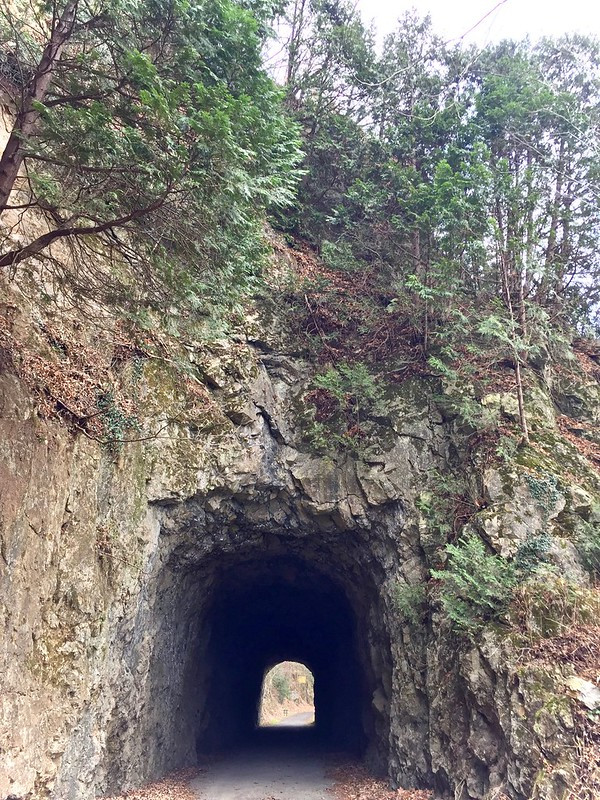
Austinville Tunnel, constructed downstream of Austinville by the New River Plateau Railroad Company
Source: Virginia State Parks, New River Trail and Shot Tower State Parks
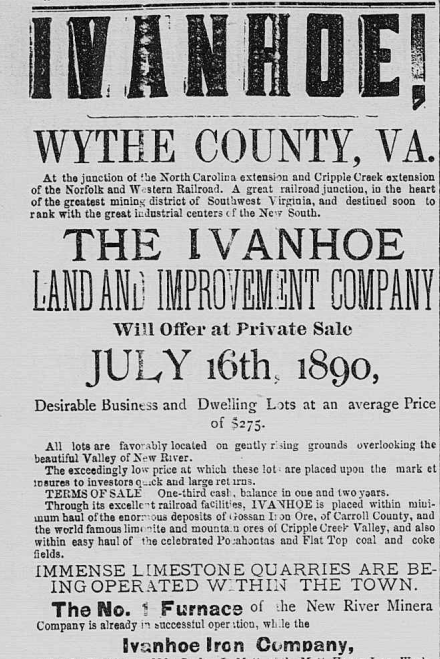
in 1890, boosters of Ivanhoe hyped a proposed extension of the railroad into North Carolina
Source: Virginia Chronicle, Library of Virginia, Roanoke Times (July 16, 1890